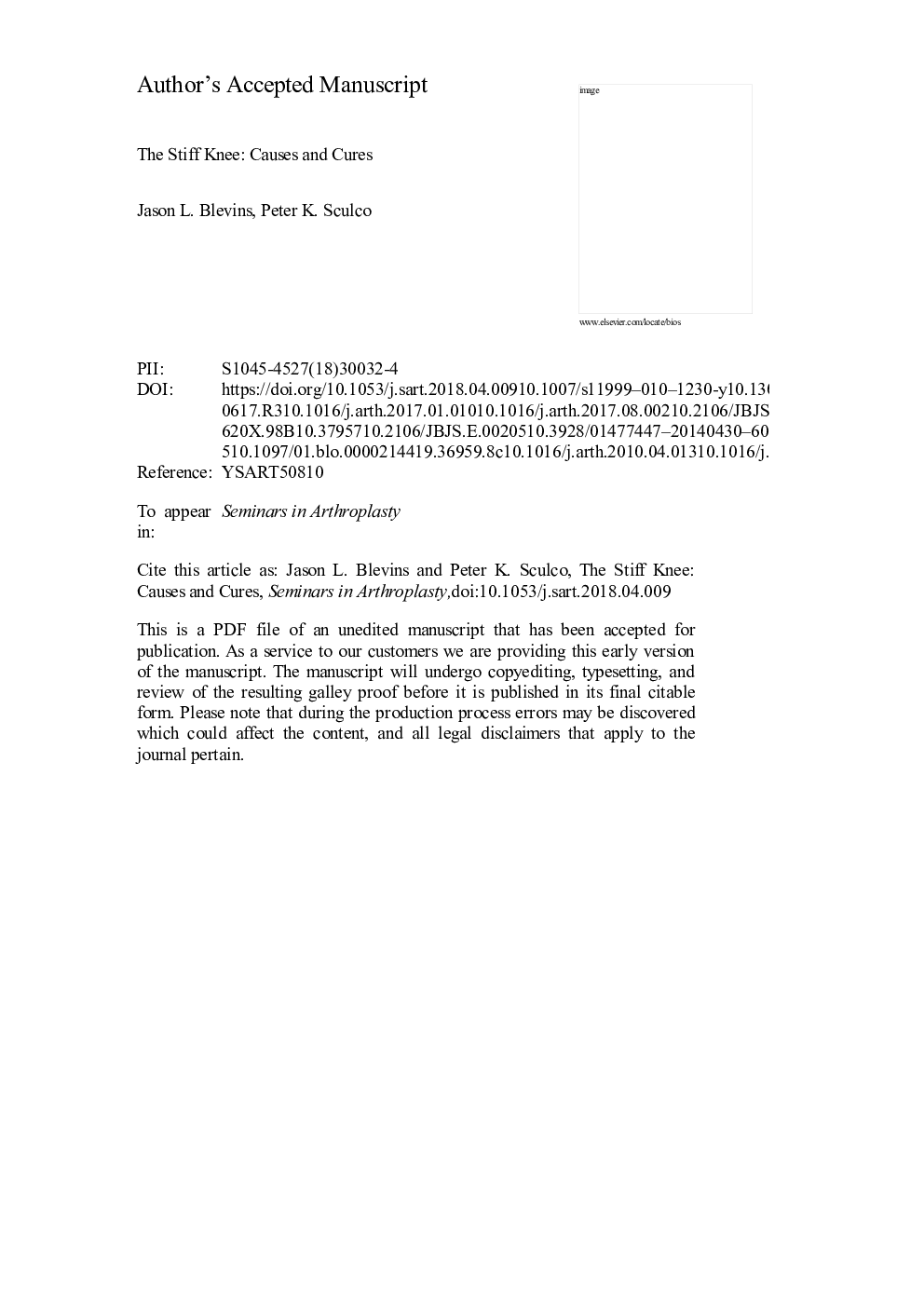| Article ID | Journal | Published Year | Pages | File Type |
|---|---|---|---|---|
| 8804046 | Seminars in Arthroplasty | 2018 | 11 Pages |
Abstract
Stiffness after total knee arthroplasty one of the most common postoperative challenges. Stiffness is currently defined as mild, moderate or severe and is based on loss of flexion or terminal extension. The causes of postoperative stiffness are multifactorial and include poor preoperative range of motion, overly tight flexion or extension gaps, component malrotation, infection, or arthrofibrosis. Treatment can be separated into early or chronic stiffness and is treated with appropriate physical therapy, followed by manipulation under anesthesia which is best performed within 3 months of surgery. For chronic stiffness, arthroscopic lysis of adhesions and MUA is an option, particularly for flexion deficits, or open lysis of adhesions with polyethylene downsizing. Component revision is usually performed after one year from surgery for the severely stiff knee and those with malrotated/malaligned components. For MUA, around 85% of patients will return to normal function and ROM. For the remaining 15%, further surgical intervention can improve ROM by around 15 to 30 degrees. For component revision in the correct patient, ROM can improve significantly but complication, reoperation rates are higher than for aseptic revision surgery. This article reviews the causes and potential cures for stiffness after total knee arthroplasty.
Keywords
Related Topics
Health Sciences
Medicine and Dentistry
Orthopedics, Sports Medicine and Rehabilitation
Authors
Jason L. MD, Peter K. MD,
